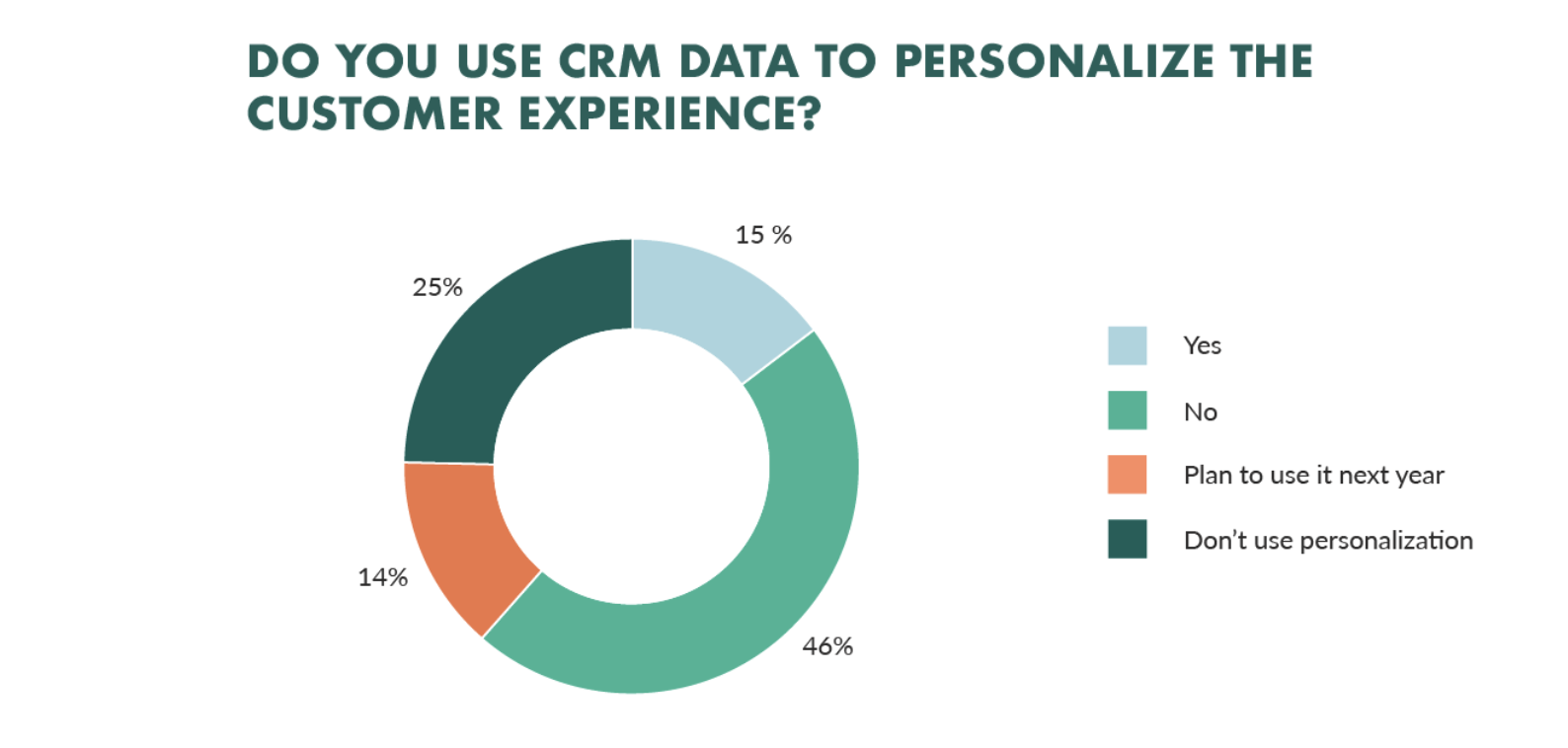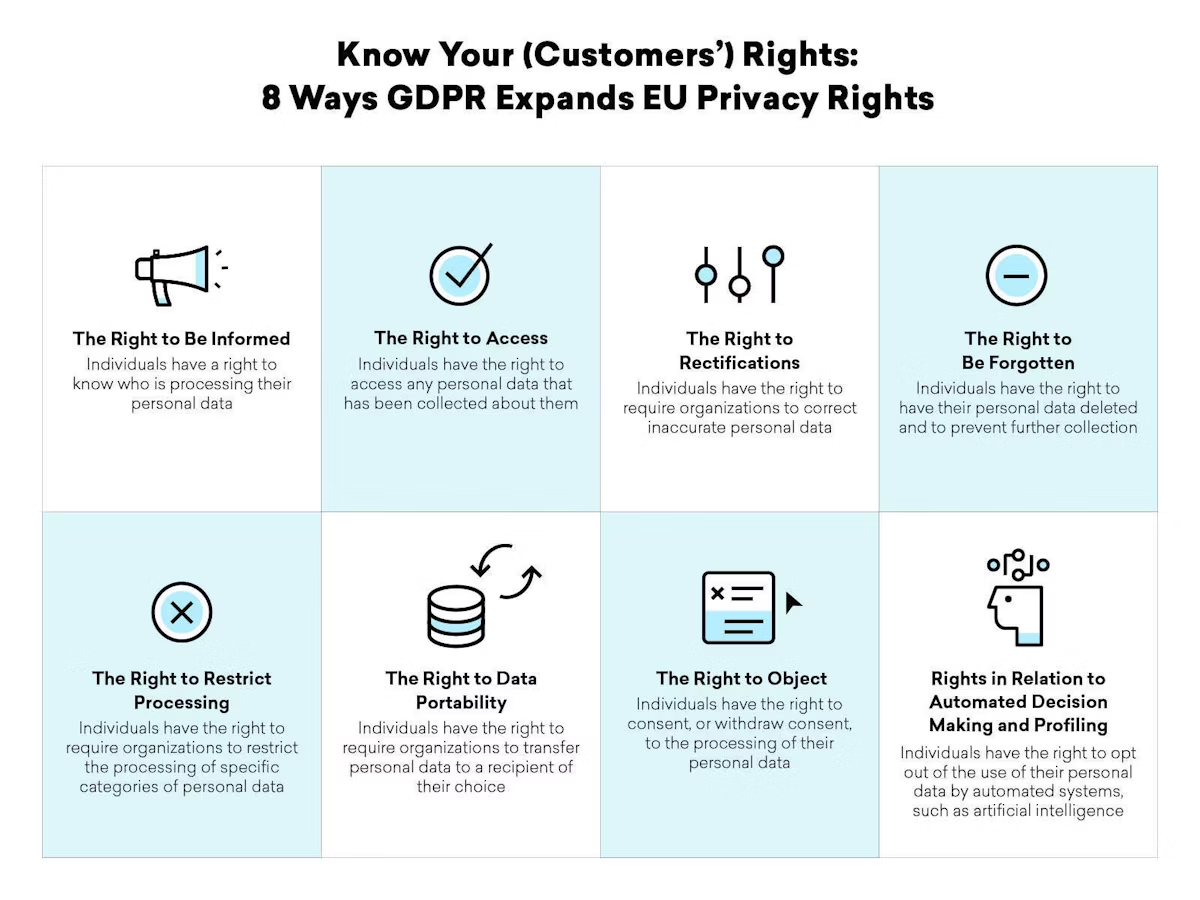Social media segmentation is the practice of breaking down your target audience into segments based on a range of data types. This helps you to understand your audience and produce content that will interest them.
This has a number of benefits – not least increasing sales – but how do you start on your social media segmentation journey?
In this article, we’ve put together a comprehensive guide to what social media audience segmentation is, how it can benefit you, and how you can get started.
Why is social media audience segmentation important?
Social media audience segmentation allows you to be much more targeted with your social media marketing. Rather than creating generic content designed for your audience as a whole, you segment your audience and create content for each segment. This boosts your marketing efforts, generates more leads and creates higher engagement.
Types of social media audience segments
Segmentation can be performed based on a range of data types. Let’s look at some examples.
Demographic segmentation
Demographic segmentation is the process of segmenting your potential customers based on their gender, nationality, age, income, marital status, occupation, family size, etc. This type of segmentation can be useful for clothing brands that often sell to specific population groups.
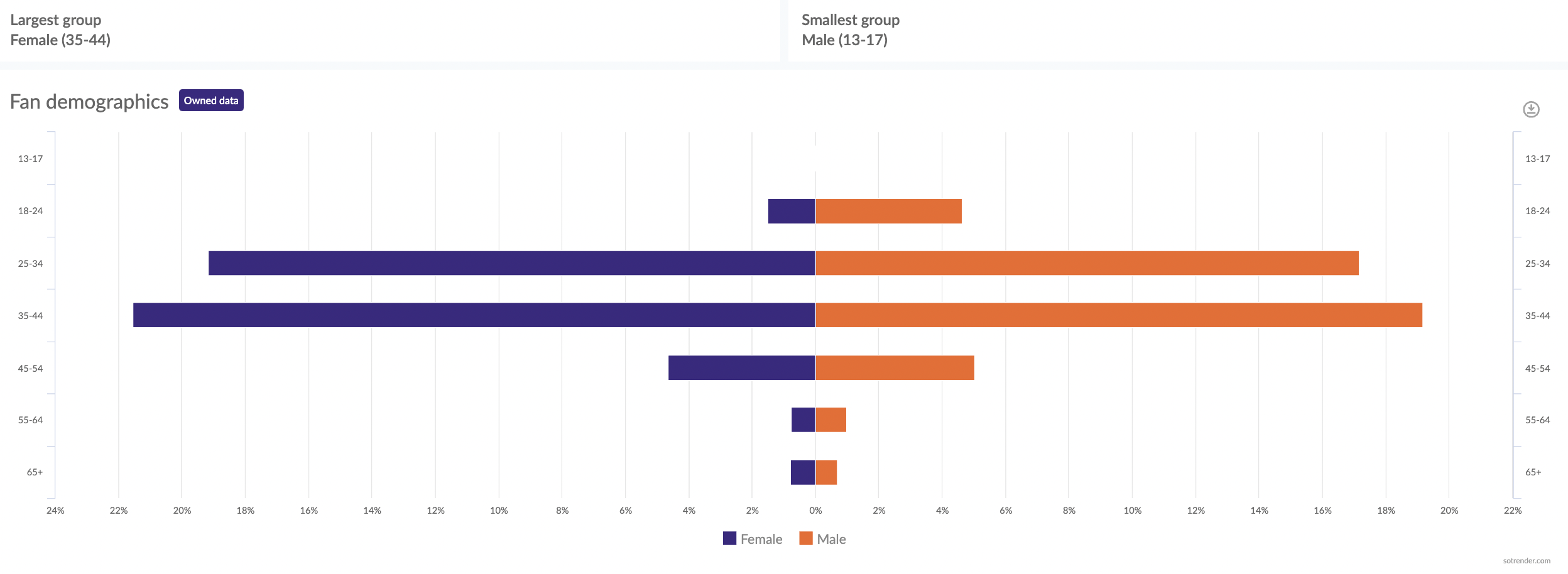
Demographic audience analysis in Sotrender
Geographic segmentation
Geographic segmentation divides your audience by geographic location. This could be done at several resolutions. You can segment your audience by continent, country, city, or even neighborhood.

Location segmentation, Sotrender
Geographic segmentation can enable location-specific marketing such as pop-up events, and localized ad copy.
Psychographic segmentation
Psychographic segmentation is the practice of dividing your customer base into segments based on their internal characteristics.
These are harder to define than geographic and demographic characteristics. Examples of psychographic criteria include lifestyle, beliefs, personality, attitudes and activities, interests, and opinions (AIO).
Behavioral segmentation
Behavioral segmentation means categorizing your audience based on behaviors such as how they interact with your posts, the type of posts they interact with, or how they interact with your website or app.
Behavioral segmentation is powerful for tailoring social media ads and contents for specific target segments.
Technographic segmentation
Segmenting your audience technographically means to categorize them based on their technology and tool usage. Technographic criteria could include device (phone, laptop, tablet etc.), software, social media platforms, cloud services, and streaming services.
Do they still make phone calls, or are they using a live video calling app? Do they use Facebook, or prefer TikTok? Identifying which of these technologies your customer uses allows you to segment them into innovators, early adopters, late adopters, and laggards, and to market your products to them accordingly.
Customer lifecycle stage
The customer lifecycle is an important concept to understand when developing a customer segmentation strategy.
The customer lifecycle describes how a customer first becomes aware of a brand, makes their first purchase with the company, and then over the long term (hopefully) becomes a loyal customer.
The customer lifecycle is broken down into five stages: reach, acquisition, conversion, retention, and loyalty.
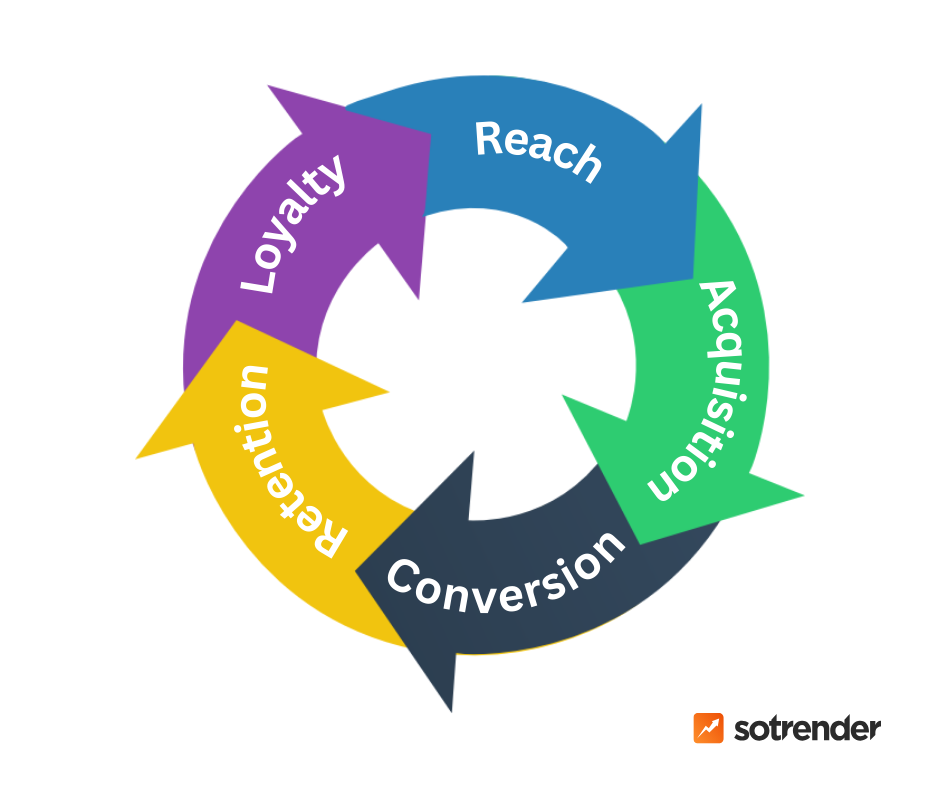
Reach
The reach stage is where a prospect first becomes aware of a problem they need to solve, and begins to research for products that can solve this issue for them. For example, they’re setting up a business and need a domain.
Acquisition
At the acquisition stage, the prospect has begun to interact directly with you as a company. This could be through your website, or over the phone – either way, the customer should be met with a friendly and useful customer experience. At this point, our example customer has performed a domain name search on various websites and identified who they could buy one from.
Conversion
When a customer has gathered all the information they need and made a purchase with you, they have entered the conversion phase. They have now become a customer.
Retention
Now that the person has become a customer, it is important to retain them as a customer – this is the retention phase. You can also offer exclusive offers and perks to the customer to encourage them to make further purchases with you.
Loyalty
At the loyalty stage, the customer has made multiple purchases. Not only are they a valuable asset because they will continue to spend with the brand, but they will also share their positive experience with their friends and followers on social media.
Getting started with social media audience segmentation
We’ve covered the ways that your audience can be segmented, but how do you actually get started?
Defining your goals and objectives
Before you begin segmenting your audience, first define the reasons behind the process. What do you want to achieve through social media audience segmentation? How will you measure your performance, and what will be classed as a success?
Examples could be an increase in ROI of paid social media advertising, or greater website traffic from your social media channels.
Gathering data about your social media audience
To segment your target audience it is essential to gather information on them. Without it, audience segmentation is impossible.
Social media platforms provide analytics and data, but to get truly insightful audience information we recommend using a dedicated tool. Social media data analysis tools like Sotrender give you access to more detailed information than built-in analysis tools, allowing you to segment your audience based on criteria that you otherwise wouldn’t have access to.

Social media audience analysis in Sotrender
Identifying key segmentation criteria
The segmentation criteria you choose can depend on many factors including the type of company you are, company size, which markets you cooperate in, your customer base, and more.
For example, a company that strives to offer the best enterprise video conferencing solutions is likely to use technographic segmentation.
Developing detailed buyer personas
Once you have gathered information on your customers, you can use this data to develop buyer personas – this is the actual segmentation part of the process.
These buyer personas summarize the crucial information about your customer types, identifying key features such as typical demographic, behavioral, and psychographic beliefs.
By understanding your customers as fleshed-out people, it is much easier to create valuable content for them that they will engage with, and will lead to sales.
Tailoring your content for each segment
With a better understanding of your audience, you can design content that is more likely to catch their attention and result in more leads. You should endeavor to create different content for each segment for maximum engagement.
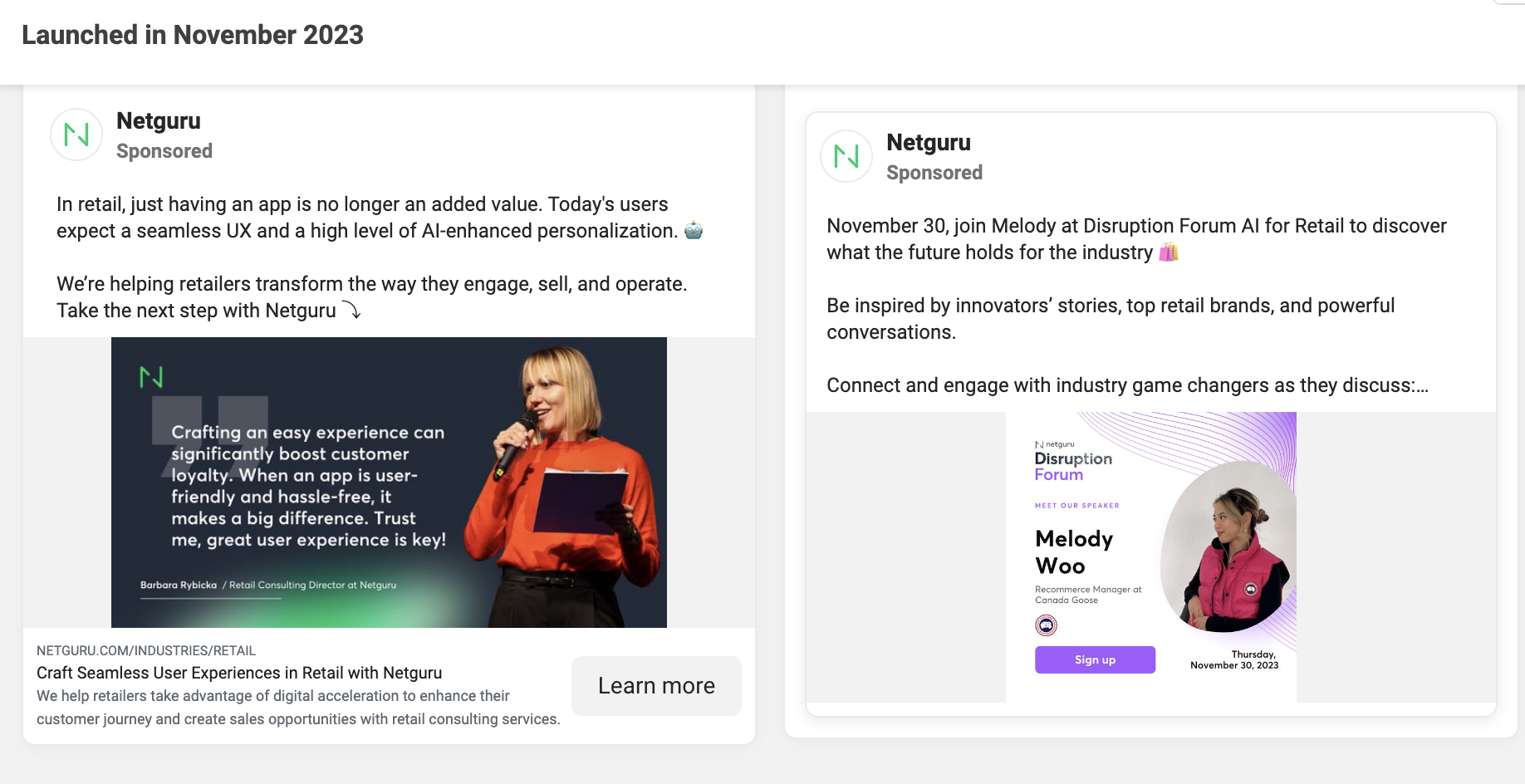
Netguru ads targeting various audience segments, source: Facebook Ad Library
Integrating segments into your social media strategy
With audience segments identified, you can integrate them into your social media strategy relatively easily. Rather than “spraying and praying”, you can be intentional with each post, and identify a particular segment or segments you are targeting with each post.
Utilizing social media analytics tools
Social media platforms provide insights and analytics into post performance and give some information about your target audience. However, for truly insightful information, and to give yourself the competitive edge, a dedicated and powerful social media analytics tool is a must.
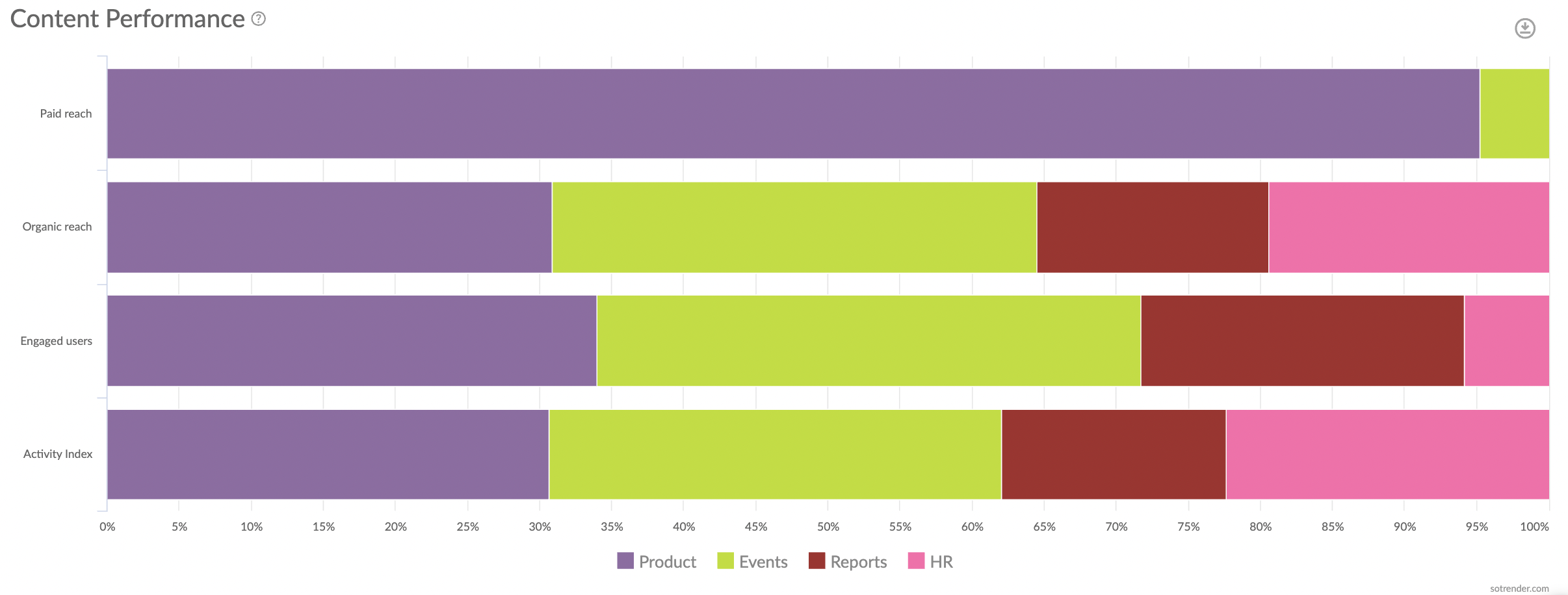
Sotrender lets you analyze how your post categories, based on your custom tags, perform in terms of reach or engagement.
Best practices for effective social media audience segmentation
We’ve covered many social media audience segmentation best practices already in this article, but here’s a quick summary of some of the most important things to bear in mind:
- Choose relevant segmentation criteria
- Create customer personas with your data
- Strategize the best ways to reach each of your segments
- Use a dedicated social media analytics tool for optimum ROI
Leverage personalization techniques
Personalization techniques involve tailoring your social media output to match what your segments want to see. Though 72% of people only engage with content that is personalized to them, 25% of businesses are not leveraging personalization techniques.
Some tips for personalizing your social media content include:
- Create an emotional bond with your audience
- Post different types of content through different channels
- Take advantage of user history
- Offer personalized deals
Provide value and engage with your audience consistently
This is a piece of advice that all social media marketers should be following, not just those using segmentation strategies. Consistency is a fundamental rule of running a social media account, as is audience interaction.
Maintain a consistent brand identity across segments
Though you want to create content that is tailored to each of your audience segments, don’t lose sight of your overall brand image! Your messaging and identity should remain consistent across all platforms and in every post.
Comply with data protection and privacy regulations
Of course, when it comes to gathering data it is very important that you comply with all data protection and privacy regulations. If you’re based in Europe, make sure you’ve brushed up on your GDPR knowledge. US companies have a different set of laws to comply with.
Review and adapt segmentation periodically
Your audience changes over time and so your segmentation must adapt. To continue producing social media content that will catch your audience’s eye, you need to continue to understand who they are and update your segmentation regularly.
Monitor your competitors’ segmentation strategies
Any social media department would be lying if they said they didn’t want to know what their major competitors’ social media strategies were. There’s no magic way to find this out, but there are strategies you can use to track your competitors and get ahead of them.
So, what are you waiting for?
If you’re looking for a way to generate more leads from your social media platforms, then give social media audience segmentation a go.
You’ll need to gather good data on your audience, and flesh out robust customer profiles – but with a tool like Sotrender this is a breeze.
Remember, the big benefit of segmentation is that it allows you to create content that resonates with your various audience segments. This is great for them and is a surefire way to generate more engagement across your social platforms.


